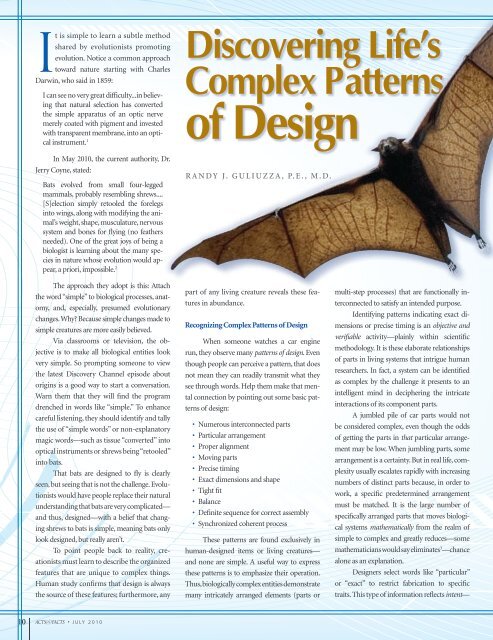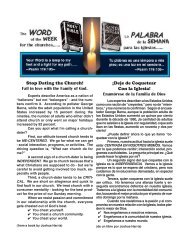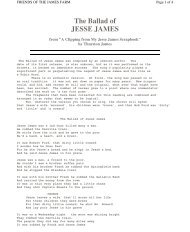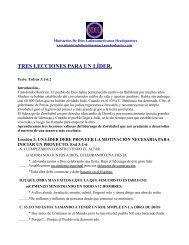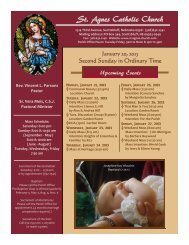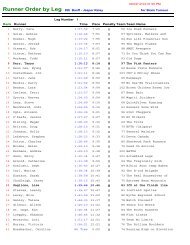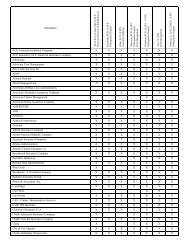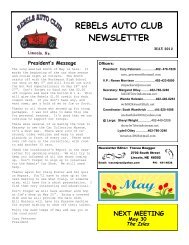icr graduates — a cause for celebration
icr graduates — a cause for celebration
icr graduates — a cause for celebration
You also want an ePaper? Increase the reach of your titles
YUMPU automatically turns print PDFs into web optimized ePapers that Google loves.
It is simple to learn a subtle method<br />
shared by evolutionists promoting<br />
evolution. Notice a common approach<br />
toward nature starting with Charles<br />
Darwin, who said in 1859:<br />
I can see no very great difficulty...in believing<br />
that natural selection has converted<br />
the simple apparatus of an optic nerve<br />
merely coated with pigment and invested<br />
with transparent membrane, into an optical<br />
instrument. 1<br />
In May 2010, the current authority, Dr.<br />
Jerry Coyne, stated:<br />
Bats evolved from small four-legged<br />
mammals, probably resembling shrews....<br />
[S]election simply retooled the <strong>for</strong>elegs<br />
into wings, along with modifying the animal’s<br />
weight, shape, musculature, nervous<br />
system and bones <strong>for</strong> flying (no feathers<br />
needed). One of the great joys of being a<br />
biologist is learning about the many species<br />
in nature whose evolution would appear,<br />
a priori, impossible. 2<br />
The approach they adopt is this: Attach<br />
the word “simple” to biological processes, anatomy,<br />
and, especially, presumed evolutionary<br />
changes. Why? Be<strong>cause</strong> simple changes made to<br />
simple creatures are more easily believed.<br />
Via classrooms or television, the objective<br />
is to make all biological entities look<br />
very simple. So prompting someone to view<br />
the latest Discovery Channel episode about<br />
origins is a good way to start a conversation.<br />
Warn them that they will find the program<br />
drenched in words like “simple.” To enhance<br />
careful listening, they should identify and tally<br />
the use of “simple words” or non-explanatory<br />
magic words<strong>—</strong>such as tissue “converted” into<br />
optical instruments or shrews being “retooled”<br />
into bats.<br />
That bats are designed to fly is clearly<br />
seen, but seeing that is not the challenge. Evolutionists<br />
would have people replace their natural<br />
understanding that bats are very complicated<strong>—</strong><br />
and thus, designed<strong>—</strong>with a belief that changing<br />
shrews to bats is simple, meaning bats only<br />
look designed, but really aren’t.<br />
To point people back to reality, creationists<br />
must learn to describe the organized<br />
features that are unique to complex things.<br />
Human study confirms that design is always<br />
the source of these features; furthermore, any<br />
10 ACTS&FACTS • JULY 2010<br />
RANDY J. GuliuzzA, P.E., M.D.<br />
part of any living creature reveals these features<br />
in abundance.<br />
Recognizing Complex Patterns of Design<br />
When someone watches a car engine<br />
run, they observe many patterns of design. Even<br />
though people can perceive a pattern, that does<br />
not mean they can readily transmit what they<br />
see through words. Help them make that mental<br />
connection by pointing out some basic patterns<br />
of design:<br />
• Numerous interconnected parts<br />
• Particular arrangement<br />
• Proper alignment<br />
• Moving parts<br />
• Precise timing<br />
• Exact dimensions and shape<br />
• Tight fit<br />
• Balance<br />
• Definite sequence <strong>for</strong> correct assembly<br />
• Synchronized coherent process<br />
These patterns are found exclusively in<br />
human-designed items or living creatures<strong>—</strong><br />
and none are simple. A useful way to express<br />
these patterns is to emphasize their operation.<br />
Thus, biologically complex entities demonstrate<br />
many intricately arranged elements (parts or<br />
multi-step processes) that are functionally interconnected<br />
to satisfy an intended purpose.<br />
Identifying patterns indicating exact dimensions<br />
or precise timing is an objective and<br />
verifiable activity<strong>—</strong>plainly within scientific<br />
methodology. It is these elaborate relationships<br />
of parts in living systems that intrigue human<br />
researchers. In fact, a system can be identified<br />
as complex by the challenge it presents to an<br />
intelligent mind in deciphering the intricate<br />
interactions of its component parts.<br />
A jumbled pile of car parts would not<br />
be considered complex, even though the odds<br />
of getting the parts in that particular arrangement<br />
may be low. When jumbling parts, some<br />
arrangement is a certainty. But in real life, complexity<br />
usually escalates rapidly with increasing<br />
numbers of distinct parts be<strong>cause</strong>, in order to<br />
work, a specific predetermined arrangement<br />
must be matched. It is the large number of<br />
specifically arranged parts that moves biological<br />
systems mathematically from the realm of<br />
simple to complex and greatly reduces<strong>—</strong>some<br />
mathematicians would say eliminates 3 <strong>—</strong>chance<br />
alone as an explanation.<br />
Designers select words like “particular”<br />
or “exact” to restrict fabrication to specific<br />
traits. This type of in<strong>for</strong>mation reflects intent<strong>—</strong>


